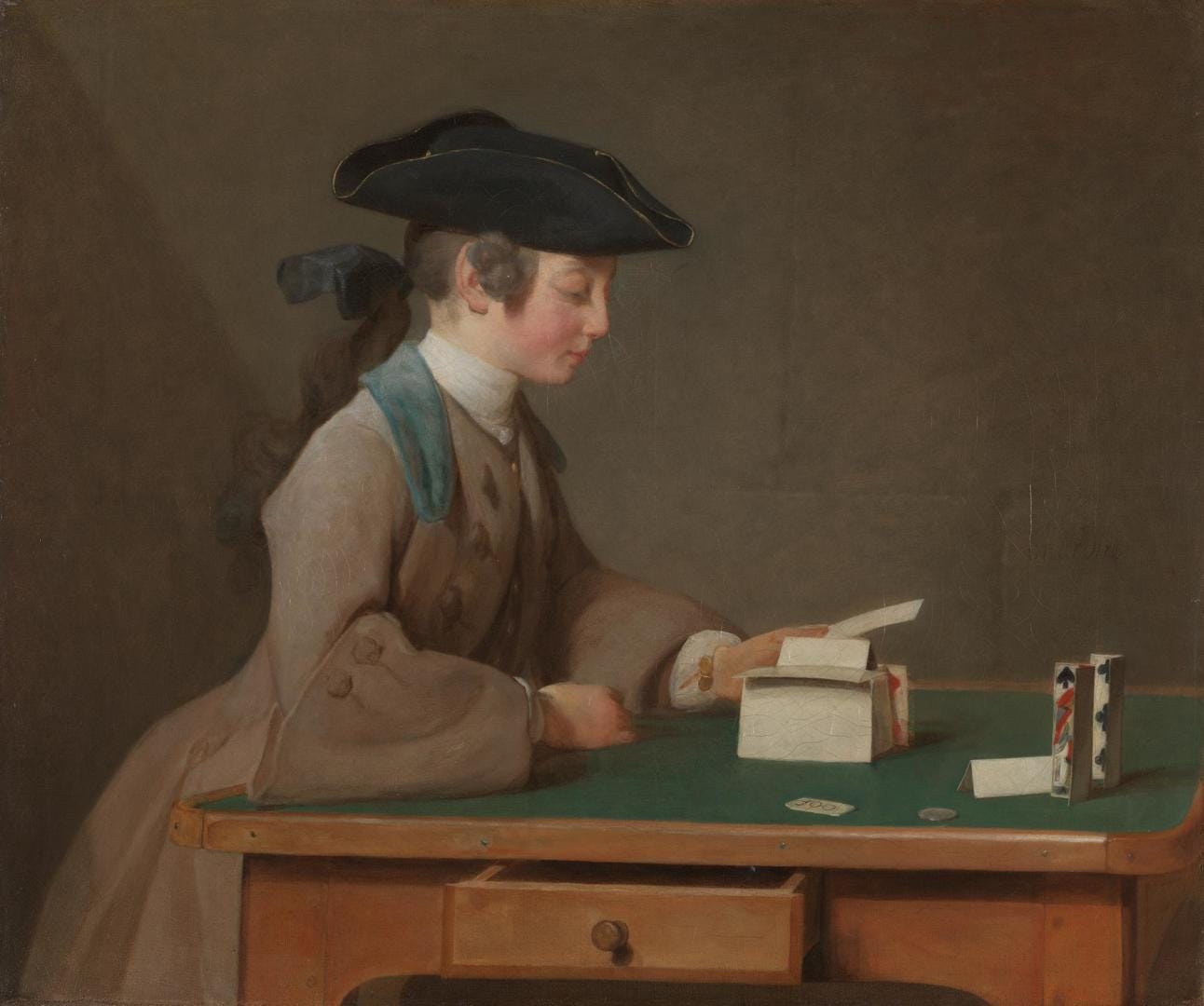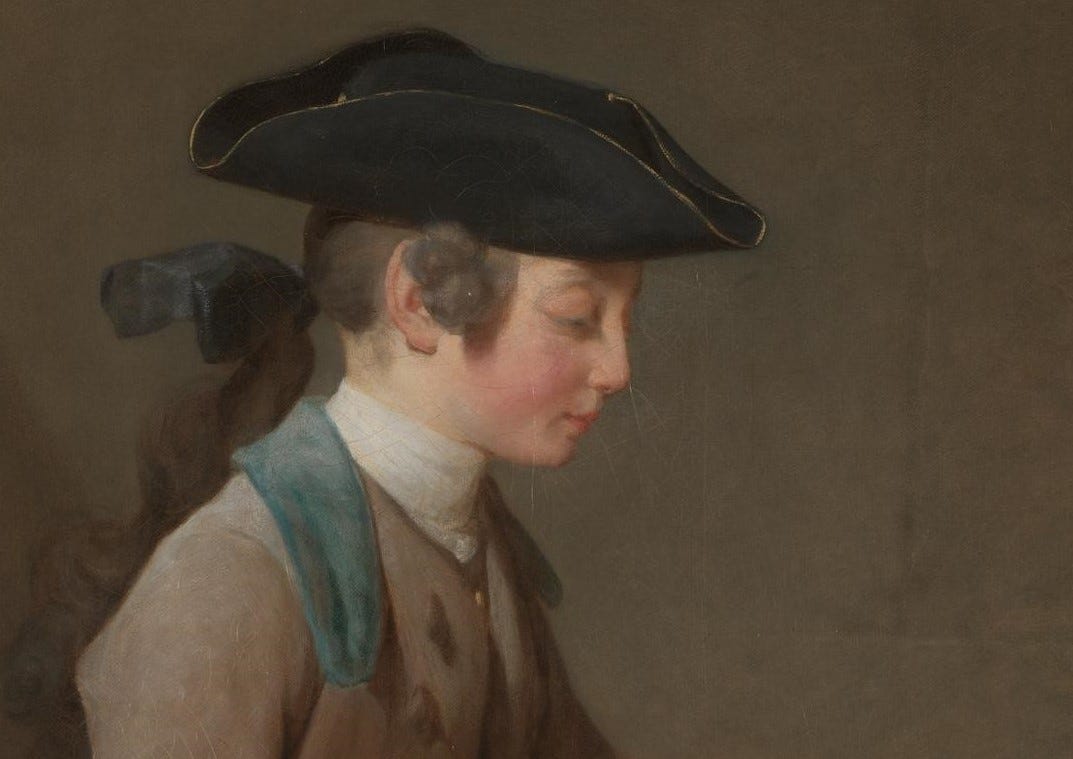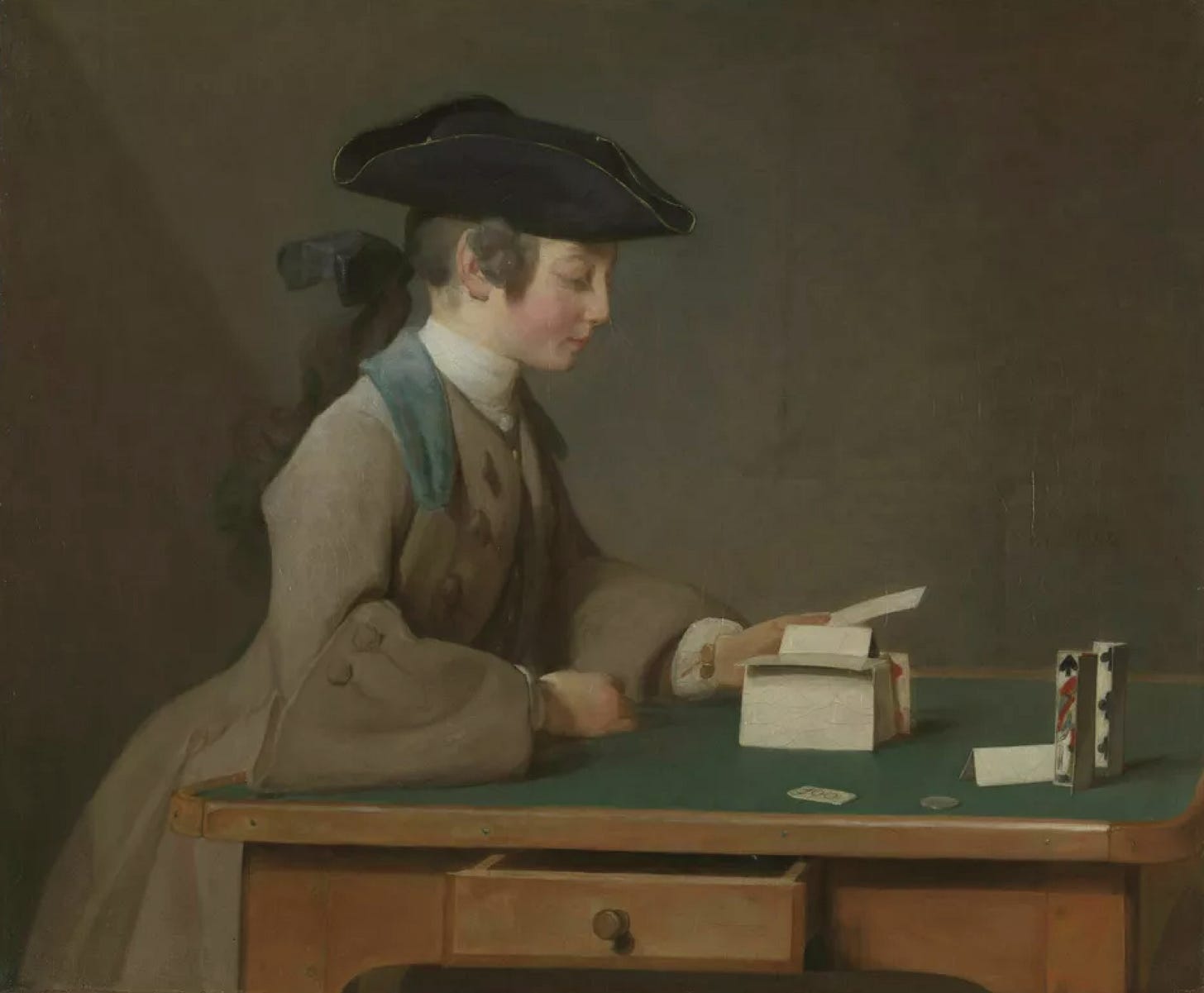A simple scene with a profound underlying meaning.
Jean Chardin’s House of Cards hangs on the walls of The National Gallery in London - and, in all honesty, is quite easy to miss; given the sheer size, scale, and drama of other masterpieces in their collection.
But while some paintings are specifically designed to be like a public spectacle . . . we must remember that a piece like this is much more intended as a kind of private, personal meditation.
And for that purpose - Chardin’s work really is among the very best.
On first glance - the title is pretty self explanatory.
We are looking at a young boy - seeming to be relatively carefree in a moment of leisure - building his little “house” out of a deck of playing cards.
There is no other overt sense of drama or of tension. . . thus, in all honesty, the whole scene can appear really quite sedate.
But, if we take a moment to go beyond surface level here - there is far more for us to find.
For example, why is that empty drawer still open at the bottom of the picture?
And why is the young boy sitting here in a room with no window?
And what about the way he is dressed too . . . with the expensive coat, and the cufflinks, and the admirals cap - don’t they all seem a little too grown up for someone of his age? (Even by 18th century standards!)
Of course, we might say the easiest explanation for all of this is that he is simply playing at a bit of fancy dress.
But if that is the case, then why does the expression on his face seem so contemplative too . . . Almost as if his young boy, playing a child’s game, seems to be holding an entire world of adult concerns in his mind?.
Could it be that we are witnessing a moment of realisation here - perhaps that these childhood games are no longer giving him the same joy as they used to . . . or that the house of cards in front of him is a strangely fitting metaphor for the fragility of youth, and of life itself?
Chardin had already attempter this same “House of Cards” symbolism a number of times in his career - as we can see with the two earlier versions below, where our central character is slightly older than in the London version.
But while they all carry the same sort of message - reminding us of how a single wrong move, or even a gentle breeze, may lead our own “house” to come crashing down at any moment - still, I do not think the artist is intentionally trying to make us feel gloomy about the nature of life here.
Because after all, in all three paintings, the boy is still choosing to play on with his little game!

Even under the full knowledge that all hopes and dreams in this life will always be so very fragile - and that, soon enough, this “house of cards” will fall, just as innocence is replaced by experience, and youth drifts into old age . . . still, for now at least, he chooses to play on!
And, to some extent, the painting is encouraging us to do the same.
_
We do not know what our future will bring.
We do not know when our own “game” will be over - nor when our house of cards may crumble
Yet still, while we are at the table of life . . . let us continue to play on.









Really liked this on! Thank you for the time you spend on widening our view
Nice! Thanks, as always. And play on!